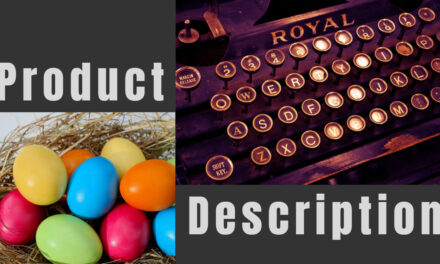Introduction
Digital marketing has emerged as a potent tool for reaching out to prospective clients and establishing a robust online presence. As a coach just embarking on the digital marketing journey, you might feel overwhelmed by the vast array of platforms and strategies available. However, amidst this digital clutter, one platform stands out for its unparalleled reach and engagement—YouTube.
YouTube is more than just a video-sharing platform; it’s a place where millions of people come to learn, engage, and connect. This makes it an invaluable resource for coaches like you and me, enabling us to reach a wider audience and showcase our expertise through compelling video content.
But why specifically choose video content? Studies show that videos tend to be more engaging, more memorable, and more popular among consumers than any other type of content. Not only does video increase understanding of a product or service by 74%, but 64% of users are more likely to buy a product online after watching a video.
In this blog post, I will guide you through the process of understanding YouTube advertising, defining your target audience, creating engaging video content, and setting up and optimizing your ads. By the end, you’ll have a solid foundation in YouTube advertising, ready to leverage it to expand your coaching business.
Let’s dive in and discover how you can reach your target audience through YouTube advertising.
Basics of YouTube Advertising
When embarking on the journey of YouTube advertising, it’s essential to understand the fundamentals. As the second largest search engine worldwide, right after Google, YouTube offers a vast platform for businesses to reach potential customers. And with its extensive array of advertising options, it provides numerous ways to connect with your audience.
There are several types of YouTube ads to choose from, and each has its unique strengths. Skippable in-stream ads are those videos that appear before, during, or after other videos on YouTube. Viewers have the option to skip these after five seconds. Non-skippable in-stream ads, on the other hand, are 15-20 second videos that viewers must watch before their selected video plays.
YouTube also offers Video Discovery ads. These appear alongside other YouTube videos, in the search results, or on the YouTube homepage, and they invite users to click on a thumbnail to watch your video ad. Finally, there are Bumper ads, which are non-skippable ads up to 6 seconds long that viewers must watch before their video can be viewed.
Choosing the right ad type depends on your campaign goals, budget, and target audience, which we will explore in the subsequent sections. For now, it’s important to understand that YouTube offers flexible advertising options to suit various marketing needs and objectives.
Why YouTube Ads?
You might be wondering, “Why should I invest in YouTube advertising when there are several other digital marketing platforms available?” The answer lies in YouTube’s unprecedented reach, engagement rates, and its role as a platform where consumers actively seek informative and entertaining content.
With over 2 billion logged-in users per month, YouTube’s reach is simply enormous. This makes it a prime platform to engage with a vast and diverse audience. Moreover, it’s not just about the sheer volume. People spend a significant amount of time on YouTube – the average viewing session is about 40 minutes. This provides a unique opportunity to capture the attention of potential clients and build meaningful relationships with them.
Now, let’s consider the role of YouTube in the customer journey. YouTube is not just for entertainment; it’s a platform where people come to learn. From DIY videos to educational content, users turn to YouTube to gain knowledge and insights. As a coach, you have the chance to leverage this trend by creating content that educates, inspires, and drives action.
YouTube advertising also offers powerful targeting options. You can target viewers based on their demographics, interests, search history, and even the type of content they typically watch. This means you can ensure your ads reach people who are most likely to be interested in your coaching services.
Let’s consider some real-world examples. Many coaches have found great success using YouTube ads. For instance, Coach A used YouTube ads to target users interested in personal development and saw a 25% increase in consultation bookings. Coach B used YouTube tutorials as a part of their YouTube ad strategy, resulting in an impressive boost in course sign-ups.
In summary, YouTube ads offer a unique combination of extensive reach, high engagement, and precise targeting. They provide an opportunity to not just sell your services but also establish yourself as a trusted expert in your field. This makes YouTube an invaluable tool in your digital marketing toolkit as a coach.
Understanding Your Audience
Before diving into the specifics of YouTube advertising, it’s critical to understand your target audience. Without a clear understanding of who you’re trying to reach, your advertising efforts may fail to resonate and engage effectively.
Your target audience is the specific group of people you want to reach with your messaging, those who are most likely to be interested in your coaching services. These could be aspiring professionals, athletes, students, business executives, or anyone who fits your coaching niche.
To understand your audience, start by defining their demographics – age, gender, location, language, and so on. But don’t stop there. Dive deeper into their psychographics – their interests, values, attitudes, and lifestyle. What challenges are they facing that your coaching services can help overcome? What goals are they striving to reach that align with your coaching expertise?
Equally important is understanding their online behavior. When are they most active online? What type of content do they engage with? What are their search patterns on platforms like YouTube?
Understanding your audience will not only help in creating content that resonates but also in effectively targeting your ads. The more you know about your audience, the better you can tailor your messaging to engage and attract them. In the next section, we’ll look at how YouTube’s targeting tools can help achieve this.
YouTube’s Audience Targeting Tools
Once you have a clear understanding of your target audience, the next step is to use YouTube’s audience targeting tools to ensure your ads reach them effectively. These tools allow you to be specific about who sees your ads, maximizing the impact of your advertising budget and enhancing the relevance of your messages.
YouTube offers a variety of targeting options that allow you to fine-tune your ad delivery:
1. Demographic Targeting:
- This allows you to target your ads based on age, gender, parental status, or household income. For instance, if your coaching services are aimed at mid-career professionals, you might target users in a specific age group.
2. Interest-Based Targeting:
- This allows you to reach people based on their specific interests, whether they’re into health and wellness, self-improvement, professional development, etc. If you’re a business coach, for example, you could target people who have shown an interest in entrepreneurship.
3. Keyword Targeting:
- With this, you can target users based on what they’re searching for on YouTube. As a career coach, you could target keywords like “career advice,” “resume tips,” etc.
4. Placement Targeting:
- This enables you to display your ads on specific YouTube channels, videos, apps, or websites. If there are popular channels that your target audience frequents, placement targeting could be a great option.
By leveraging these tools, you can ensure that your YouTube ads reach the people most likely to be interested in your coaching services, thereby increasing the likelihood of engagement and conversion.
Video Content Strategy
Once you’ve understood the basics of YouTube advertising and defined your target audience, it’s time to create compelling video content that resonates with your viewers. Developing a video content strategy is a crucial part of this process.
Firstly, remember that your videos should provide value. YouTube is a platform where users come to learn, be inspired, and entertained. As a coach, you’re in a unique position to provide valuable insights, share knowledge, and inspire action. Your video content should reflect this.
Consider your coaching niche and your audience’s needs. For instance, if you’re a wellness coach, you might create content around stress management techniques, healthy habits, or mindfulness practices. If you’re a business coach, you might share tips on leadership, productivity, or business strategy.
In addition to educational content, consider sharing success stories or testimonials from your clients. This not only adds a personal touch to your videos but also builds trust and credibility.
Finally, keep in mind that your videos should align with your overall brand and message. Consistency in tone, style, and messaging helps in creating a strong brand image and fosters trust among your audience.
In the next section, we’ll discuss best practices for creating engaging video content.
Best Practices for Creating Engaging Video Content
Creating engaging video content is both an art and a science. Here are some best practices to guide you through the process:
1. Start Strong:
- You have a few seconds to capture your viewer’s attention. Start your video with a compelling hook – an intriguing question, a surprising fact, or a relatable problem that your coaching services can solve.
2. Keep It Concise and Focused:
- While YouTube allows for longer videos, it’s essential to respect your audience’s time. Keep your content concise, clear, and focused on the topic at hand.
3. Include a Clear Call to Action (CTA):
- What action do you want viewers to take after watching your video? Whether it’s booking a consultation, signing up for your newsletter, or purchasing a course, make sure your CTA is clear and compelling.
4. Quality Matters:
- High-quality visuals and audio significantly impact viewer engagement. Invest in good lighting, clear sound, and steady camera work.
5. Optimize for SEO:
- Make sure your video titles, descriptions, and tags include relevant keywords. This will help your content get discovered on YouTube’s search engine.
6. Engage with Your Viewers:
- Encourage viewers to like, share, and comment on your video. Responding to comments can foster a sense of community and engagement around your brand.
Creating engaging video content might seem challenging, but with these best practices, you’re well on your way to connecting with your target audience effectively.
Step-by-step Guide to Setting up a YouTube Ad
Setting up a YouTube ad campaign might seem daunting, but with a clear step-by-step guide, you’ll be up and running in no time. Here’s how to do it:
1. Create a Google AdWords Account:
- If you don’t already have one, create a Google AdWords account. This is the platform you’ll use to create and manage your YouTube ads.
2. Link Your AdWords and YouTube Accounts:
- Go to your AdWords account settings and click “Linked accounts,” then follow the prompts to link your YouTube channel.
3. Create a New Campaign:
- In your AdWords dashboard, click on “Campaigns” then “+ New Campaign.” Choose the goal that aligns with what you want to achieve with your ads.
4. Choose Your Ad Type:
- Select the type of ad you want to create (e.g., skippable in-stream ad, video discovery ad, etc.).
5. Define Your Target Audience:
- Use the targeting tools to specify who you want to reach with your ads. Remember to apply the audience insights from your earlier research.
6. Set Your Budget:
- Decide how much you want to spend each day on your campaign. You only pay when someone interacts with your ad, like clicking on it or watching for 30 seconds.
7. Upload Your Video:
- Finally, upload your video, craft a compelling headline and description, and launch your campaign.
Remember, setting up your YouTube ad is only the beginning. In the next section, we’ll look at how to optimize your ads for the best performance.
Optimizing Your YouTube Ads
Once your YouTube ads are live, it’s crucial to monitor their performance and make necessary adjustments to optimize their effectiveness. Here are some tips to help you in this process:
1. Leverage YouTube Analytics:
- YouTube provides robust analytics that give you insight into how your ads are performing. Regularly check these analytics to understand what’s working and what needs improvement.
2. Test Different Ad Formats:
- Different ad formats can yield different results. Experiment with various types of ads (e.g., skippable in-stream, non-skippable in-stream, discovery ads, bumper ads) to see which ones resonate best with your audience.
3. Refine Your Targeting:
- As you gather data about your audience, you may find opportunities to refine your targeting. Perhaps a specific demographic responds better to your ads, or certain keywords result in higher engagement.
4. Improve Your Videos Based on Viewer Behavior:
- YouTube analytics can show you at what point viewers tend to drop off from your video. If many viewers are leaving early, consider revising your video to hook the viewer better in the first few seconds.
5. Adjust Your Budget:
- Monitor your cost per click (CPC) or cost per view (CPV) to ensure you’re getting a good return on your investment. If necessary, adjust your bidding strategy or daily budget.
Remember, the key to successful YouTube advertising is constant testing, learning, and optimizing. With these steps, you’ll be well-equipped to ensure your YouTube ads are as effective as possible.
Conclusion
Embarking on your YouTube advertising journey may seem challenging initially, especially if you’re new to digital marketing. However, with its vast user base, high engagement rates, and potent targeting tools, YouTube offers an invaluable platform to reach your target audience and grow your coaching business.
Understanding the basics of YouTube advertising, knowing your audience, creating engaging video content, and effectively setting up and optimizing your ads – all of these steps create a pathway to successful advertising on YouTube. Remember, the process involves constant learning and adjustment. What works for one coach might not work for another, and that’s okay. The key is to stay in tune with your audience, provide valuable content, and continually optimize your strategies.
Embrace YouTube advertising not just as a means to sell your services, but also as a way to establish yourself as a trusted expert in your field, build relationships with your audience, and make a positive impact. You’re not just creating ads – you’re sharing your unique insights, expertise, and solutions with those who need them most. Happy advertising!
Call to Action
Now that you have the necessary knowledge and tools to kickstart your YouTube advertising journey, it’s time to put these strategies into action. Remember, effective digital marketing is about consistent effort, learning from your experiences, and tweaking your strategies to better connect with your audience.
Take the first step today – brainstorm ideas for your first YouTube ad, or start diving deeper into your target audience’s characteristics and behaviors. If you have any questions or need further guidance, don’t hesitate to reach out. I’m here to help you succeed!
And, if you’ve found this guide useful, please consider sharing it with other coaches who might benefit from it. Let’s elevate our coaching practices together, utilizing the power of YouTube advertising to reach and positively influence more lives.
Don’t forget to subscribe to our blog for more insights, strategies, and tips to grow your coaching business. Start your YouTube advertising journey today, and unlock new opportunities for growth and connection. Your audience is waiting for you. Let’s get started!
Bonus: Resources
To help you further in your YouTube advertising journey, I’ve compiled a list of additional resources that offer in-depth knowledge, insights, and tools. Whether you’re creating your first ad or optimizing your ongoing campaigns, these resources will be invaluable:
1. Google Ads Help Center:
- An excellent resource for getting started with Google AdWords, understanding different ad formats, and learning how to set up and manage your campaigns. (https://support.google.com/google-ads/)
2. YouTube Creator Academy:
- This offers free online courses to help you create compelling content, understand YouTube’s policies and guidelines, and make the most of the platform’s tools and features. (https://creatoracademy.youtube.com/page/home/)
3. Think with Google – YouTube Insights:
- This resource offers insights into video trends, case studies, and best practices for creating engaging YouTube ads. (https://www.thinkwithgoogle.com/marketing-strategies/video/youtube-viewer-behavior-online-video-audience/)
4. VidIQ:
- A great tool for YouTube SEO. It can help you find the right keywords, track your rankings, and optimize your video content for better discoverability. (https://vidiq.com/)
5. Biteable’s YouTube Video Ad Maker:
- An easy-to-use tool to create professional-looking YouTube ads, even if you’re not a seasoned video editor. (https://biteable.com/youtube/)
6. Neil Patel’s Guide to YouTube Marketing:
- A comprehensive guide that covers all aspects of YouTube marketing, from creating videos to promoting them and measuring your success. (https://neilpatel.com/what-is-youtube-marketing/)
These resources should provide you with further guidance and inspiration on your YouTube advertising journey. Remember, the journey to successful advertising is a continuous learning process. Equip yourself with the right knowledge, remain curious, and you’re bound to see your efforts bear fruit.











